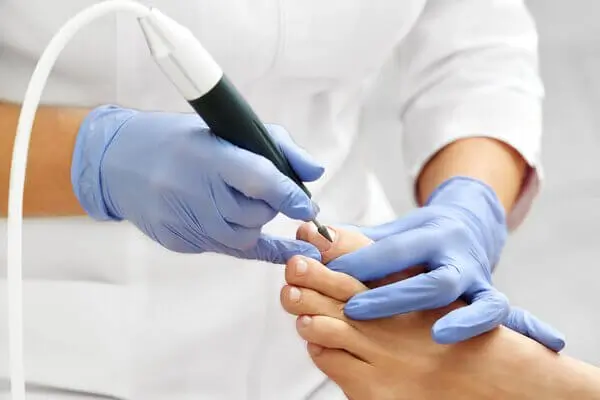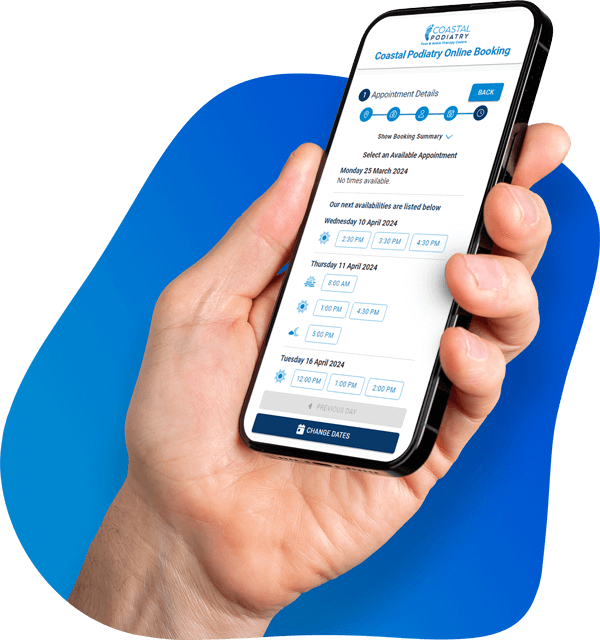What exactly are ingrown toenails, and why should you be concerned? Ingrown toenails are both common and painful. That’s not a pleasant combination, particularly when you consider that 2 out of every 10 people seeking foot healthcare are dealing with this exact problem.
Left untreated, these painful intrusions can quickly progress from a minor annoyance to a serious medical issue. When the nail edge breaks through the surrounding skin, bacteria can enter and cause infection. Who’s most at risk? Adolescents and teenagers frequently develop ingrown toenails due to growth spurts that lead to poorly fitting shoes. Many cases also stem from genetic factors—some people simply inherit a tendency for their nails to grow inward.
How can you protect yourself from ingrown toenails? The solution is surprisingly straightforward with proper knowledge. Most cases stem from two primary causes: incorrect nail cutting techniques and constricting footwear. Both issues can be easily addressed with simple changes to your routine. Proper toenail trimming—cutting straight across rather than rounding the edges—dramatically reduces your risk. Keeping the skin around your nails dry and well-maintained creates another effective barrier against these painful intrusions.
What options exist if you’re already experiencing an ingrown toenail? Home remedies such as soaking in a medicated footbath can help manage minor infections. However, some cases will require professional intervention, with complete healing potentially taking 2 to 4 months. Throughout this article, we’ll explore effective prevention strategies for ingrown toenails—from essential daily habits and correct cutting techniques to recognising warning signs and knowing when professional care becomes necessary.
Daily Habits That Help Prevent Ingrown Toenails
What simple changes can significantly reduce your risk of painful ingrown toenails? Daily habits form the foundation of effective prevention. These straightforward practices not only minimise the risk of nail intrusions but also help avoid subsequent infections.
Wearing breathable, well-fitting shoes
Could your footwear be causing your ingrown toenail problems? The shoes you choose play a crucial role in toenail health. Tight or narrow shoes compress your toes, essentially forcing nails to grow into the surrounding skin. What should you look for when selecting proper footwear?
- A wide toe box that allows toes to move freely without compression
- Breathable materials like mesh and leather that promote air circulation
- Proper fit with adequate room for toes to wiggle
Lightweight athletic shoes generally provide the best environment for healthy toenails. High heels should be limited in your rotation as they shift body weight toward the front of the foot, placing excessive pressure on toenails. Parents should note that children often outgrow shoes before wearing them out, making regular size checks essential to prevent foot problems.
Keeping your feet dry and clean
Why is moisture a problem for toenail health? Dampness softens the skin surrounding toenails, creating an environment where nails can more easily penetrate and cause problems. How can you maintain proper foot hygiene?
Wash feet daily and dry thoroughly, especially between toes. This basic practice is fundamental to preventing ingrown toenails at home. Change into clean, dry socks after activities that cause feet to sweat.
When possible, allow your feet to breathe by going barefoot at home. This simple practice helps prevent the warm, moist environment that contributes to various foot problems.
Avoid picking or tearing at toenails
What’s the proper way to maintain your nails? Improper nail maintenance ranks among the most common causes of ingrown toenails. Rather than picking or tearing:
Soak your nails in warm water before trimming to soften them. Use clean, proper nail-cutting tools rather than tearing, which can create jagged edges that grow into the skin. Most importantly, cut straight across rather than rounding corners, as this reduces the risk of the nail growing into the surrounding skin.
Are these preventive measures worth the effort? Absolutely. Establishing these daily habits represents one of the most effective approaches to preventing recurring ingrown toenails. Unlike treating painful infections after they occur, these simple preventive measures require minimal effort yet yield significant benefits for long-term foot health.
How to Cut Toenails to Prevent Ingrown Nails
What’s the most important factor in preventing painful ingrown toenails? Proper cutting technique stands at the top of the list. Though improper trimming leads to most ingrown nail cases, the good news is that it’s entirely preventable with the right approach.
Cutting Straight Across vs. Rounding Edges
Why is the cutting angle so critical? The cornerstone of preventing ingrown toenails lies in cutting your nails straight across rather than in a curved shape. Dermatologists and podiatrists agree that cutting into the curve is the primary cause of painful and problematic ingrown nails. The golden rule remains: “cut straight, and file the edges.”
This straight-cutting technique prevents the nail from growing downward into the surrounding skin. For many people, this is easiest to accomplish with the two-cut method:
- First, cut slightly off the side of the nail to create a straight edge
- Second, remove the rest of the nail following the line of that straight cut
As we age, our nails naturally curve more. Some older adults might need to slightly round the corners afterwards, preferably using a file rather than clippers.
How Short Is Too Short?
Cutting toenails too short ranks among the most common causes of ingrown toenails. How long should they be? The nail should extend slightly beyond the tip of your toe—specifically, aim for 1-2 millimetres (0.04 to 0.08 inches) of white nail showing. This small margin prevents the nail from growing into the surrounding skin while also avoiding nails long enough to get caught and torn.
Proper length ensures that the corners lie loosely against the skin at the sides. Cutting too short can damage the nail bed and encourage the nail to grow inward as skin bunches around it.
Using the Right Tools for Trimming
Does your choice of clippers matter? Absolutely. Selecting appropriate tools significantly impacts your nail-trimming success. Opt for toenail clippers specifically designed for thicker nails, not the smaller varieties used for fingernails. These toenail clippers resemble pliers or wire cutters and are available at pharmacies.
Keep your tools clean, dry, and sharp—dull clippers require more pressure, increasing injury risk if they slip. Importantly, avoid using kitchen knives, pocket knives, sewing scissors, or other inappropriate tools that can damage nails.
Prior to trimming, soak your feet in warm water for about 10 minutes to soften nails, making them easier to cut properly. This preparation step is particularly helpful for those with thicker nails.
Preventing Ingrown Toenails at Home: Advice from a Mobile Podiatry Team
What to Do at the First Sign of Trouble
What early warning signs should you watch for with ingrown toenails? Early recognition and prompt action are critical strategies for managing ingrown toenails before they develop into painful infections. Taking immediate steps when you notice the first signs of discomfort often prevents more serious complications.
Soaking and softening the nail
How can you provide immediate relief for an ingrown toenail? Soaking the affected foot in warm, soapy water helps reduce inflammation and provides immediate relief. This simple technique should be performed for 10-20 minutes, 3-4 times daily, until improvement occurs. Adding Epsom salt to the warm water further reduces swelling and softens the nail.
What should you do after soaking your foot? A proper post-soak routine includes:
- Drying your feet thoroughly to prevent bacterial growth
- Applying petroleum jelly to the tender area
- Bandaging the toe lightly for protection
Some patients report benefits from apple cider vinegar soaks, though scientific evidence remains limited. If trying this approach, use only ¼ cup of vinegar diluted in warm water to avoid skin irritation.
Using toe protectors or sleeves
What protective measures can prevent further discomfort? Toe protectors create a cushioning barrier that prevents painful rubbing against shoes. These protective devices come in several forms:
Fabric-covered caps surround and protect the toe while absorbing pressure and friction. Gel toe caps made from medical-grade silicone conform tothe toe shape, providing gentle protection against corns, blisters, and ingrown nails. These slim protectors remain undetectable under socks and can be worn with most shoes.
Are toe protectors suitable for everyone? Those with diabetes or poor circulation should consult healthcare providers before using these devices, as they may pose risks for vulnerable feet.
Avoiding risky home procedures
Which common home remedies should you avoid? Despite the temptation, certain home remedies may worsen the condition. “Bathroom surgery” – using sharp objects to dig out an ingrown nail – can damage surrounding tissue and introduce harmful bacteria.
Never attempt to cut an infected ingrown toenail yourself. Exercise caution with cotton placement techniques as well – some medical groups advise against inserting cotton under the nail since it may increase pain and harbour bacteria.
Hydrogen peroxide, despite being a common household remedy, should not be used on ingrown toenails. Should symptoms persist beyond 2-3 days or worsen with home treatment, professional care becomes necessary.
How to Prevent Recurring Ingrown Toenails
Could You Be Prone to Ingrown Toenails? In short, yes. Whilst many causes are preventable, recurring ingrown toenails often signal an underlying issue requiring specific attention. Breaking the cycle of painful episodes demands understanding the root causes and implementing targeted preventive measures.
Recognising Patterns and Triggers
Why do some people experience repeated ingrown toenail episodes? Occasional occurrences every few months may be normal, but frequent episodes typically indicate an unaddressed problem. Common triggers worth investigating include:
Footwear that consistently applies pressure to your toes forces them to crowd together, creating ideal conditions for nail intrusion. Activities causing repetitive toe trauma, such as running in poorly fitting shoes, frequently lead to persistent problems. Genetic factors also play a significant role—some individuals simply inherit nail structures naturally predisposed to growing inward.
Those with a genetic predisposition might notice ingrown toenails recurring regularly or appearing on multiple toes simultaneously. Identifying these patterns enables more effective prevention strategies to stop the painful cycle.
When to Consider Professional Help
When should you seek medical attention for an ingrown toenail? Contact your podiatrist or healthcare provider immediately if:
- Home treatments haven’t improved your condition after one week
- You noticea severe infection with skin beginning to grow over the ingrown nail
- The pain affects your daily activities and quality of life
- You have diabetes, circulation issues, or any condition affecting wound healing
Have you completed multiple courses of oral antibiotics without improvement? This signals the need for alternative treatment approaches. This is especially critical for individuals with diabetes, nerve damage, or circulatory problems.
Long-term Care for Chronic Cases
What permanent solutions exist for persistent ingrown toenails? Surgical intervention often provides the most reliable answer. Partial nail avulsion with phenolisation offers a safe, straightforward solution with an impressive 98.5% success rate. This procedure removes the problematic nail section and applies phenol to prevent matrix regrowth in that area.
Unlike temporary remedies that merely address symptoms, this treatment tackles the root cause. Most patients return to normal activities within 48 hours, though complete healing typically requires two to six weeks, depending on individual factors.
Throughout recovery and beyond, maintaining proper nail care remains essential—continuing to cut straight across, avoid trimming too short, and wear appropriate footwear.
Conclusion
Why should you care about preventing ingrown toenails? Though affecting 20% of people seeking foot care, these painful intrusions remain largely preventable with proper attention. Throughout this guide, we’ve explored practical strategies that significantly reduce risk. Proper nail trimming techniques stand as the cornerstone of prevention—cutting straight across rather than curving the edges makes all the difference.
What daily habits help keep ingrown toenails at bay? Wearing properly fitted shoes with adequate toe space allows nails to grow normally without pressure. Keeping feet clean and dry prevents the softening of surrounding skin that often leads to nail penetration.
How important is early intervention? Acting promptly can prevent minor discomfort from developing into serious infections. Warm water soaks, protective toe sleeves, and avoiding risky “bathroom surgery” help manage early signs effectively. Those experiencing recurring problems should consider underlying factors such as hereditary nail shape or ill-fitting footwear.
When should you seek professional help? Certain situations warrant medical attention, particularly for individuals with diabetes or circulation issues. Persistent infections or severe pain despite home treatment should prompt immediate medical consultation.
The good news is that most ingrown toenail cases respond well to preventive measures and early treatment. Following the straightforward guidelines outlined above helps maintain healthy toenails and comfortable feet. After all, proper foot care represents an essential yet often overlooked aspect of overall health and well-being.
Suffering from ingrown toenails or want prevention advice? Don’t wait for pain to become a problem. The experienced team at Coastal Podiatry is here to help. Contact Coastal Podiatry today to schedule an appointment and take the first step towards healthier, happier feet!




